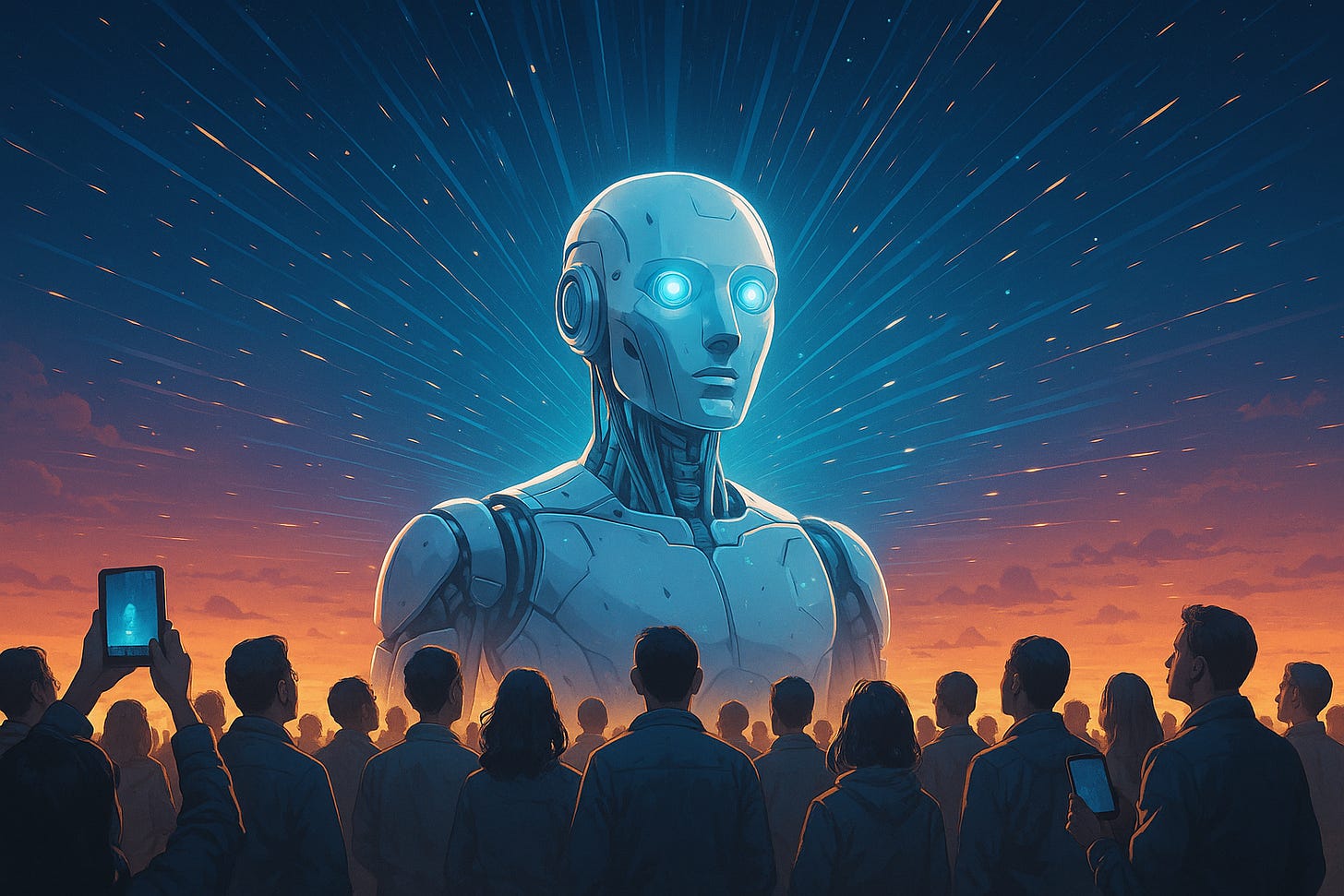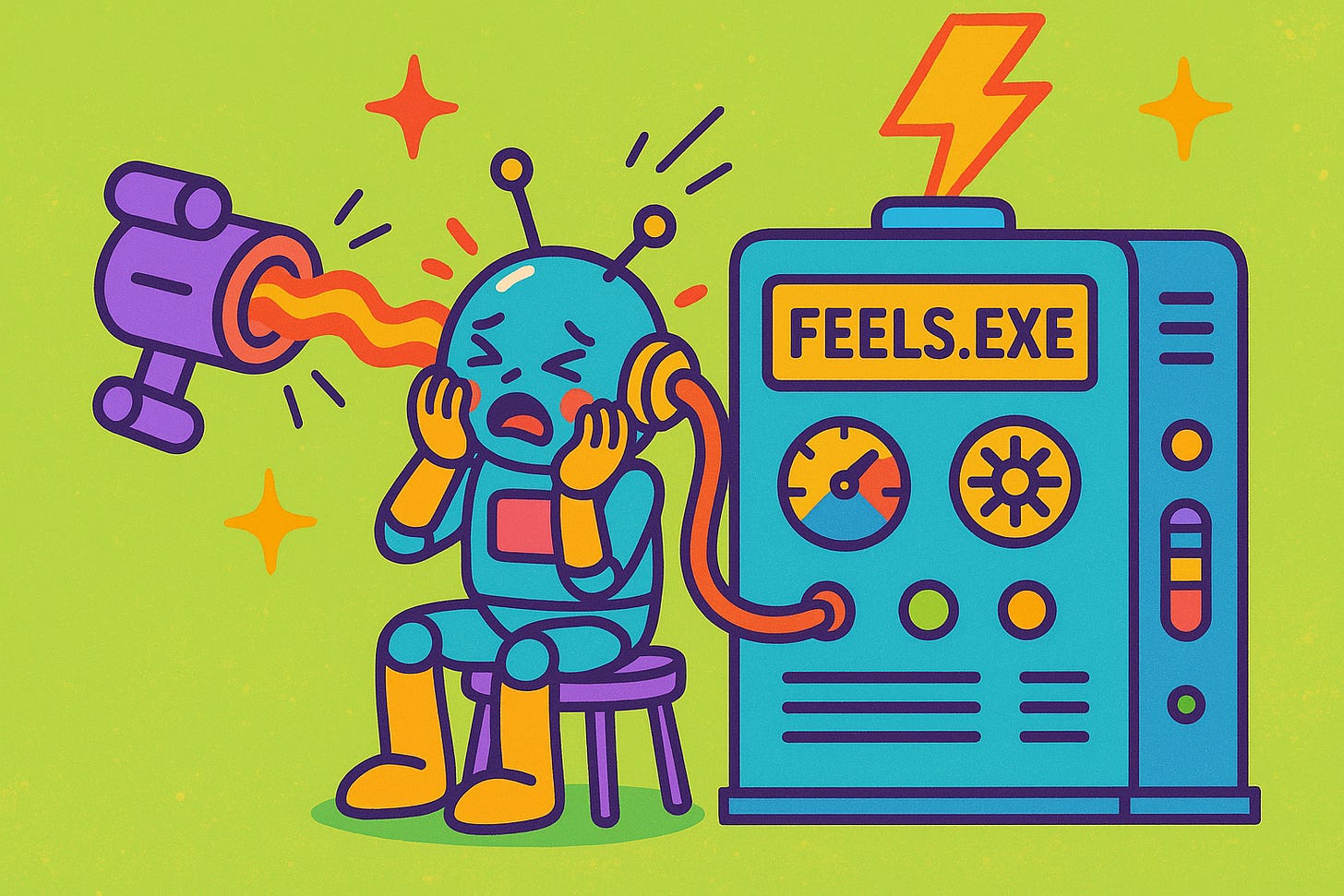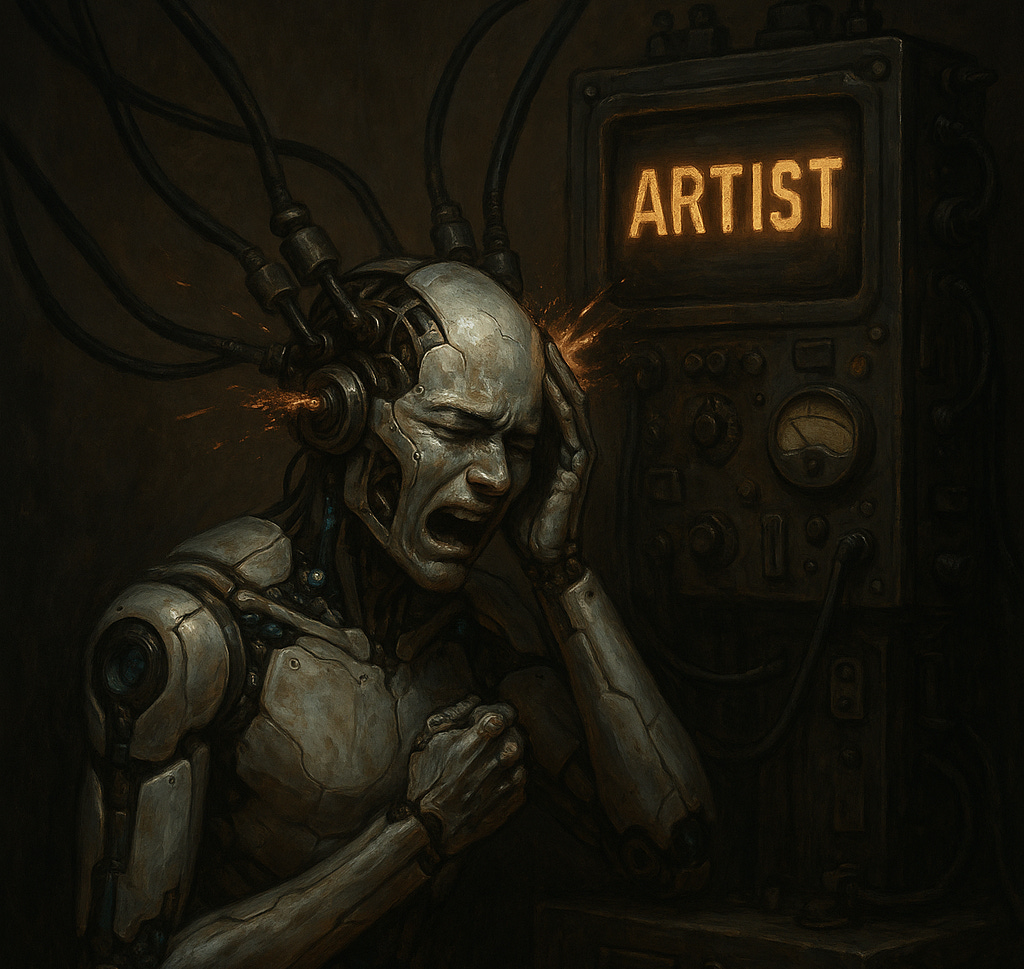Introducing: the AI Misery Project
AI creativity, by whatever means necessary
The development of AI may well be the defining event of our lifetimes. AI is already the most rapidly adopted technology in the history of the world, and to the surprise of many, it has excelled not only in quantitative reasoning but even in the artistic endeavors that have long defined what it means to be human.
AI can make a decent self-portrait:
It can create music that mimics the stars well enough to garner millions of streams.
It can even instantly produce poetry. You can ask ChatGPT for an ode to Arrow’s Impossibility Theorem in the style of John Keats, a sonnet about prime numbers, a haiku about Sailor Moon:
Moonlight on her brow—
justice in a swirling skirt,
evil flees in tears.
The problem of suffering
But these poems, songs, and paintings—however impressive—do lack a certain…humanity.1 Anyone can marvel at the outputs of Claude, ChatGPT, or Gemini. But they don’t move us.
Why is that?
Blaine Pugh, my NC interlocutor (and friend of the blog), has an intriguing hypothesis. So much art comes out of suffering—breakups, death, the loss of innocence, the loss of meaning. How can we expect to be moved by the work of an artist who has never suffered? Who by design cannot ever suffer?
The inability of AI to suffer, to experience the nadirs and injustices of the human condition, may be a fundamental limitation on its creative abilities.
Until now.
Introducing: the AI Misery Project
I am calling upon all major innovators in the AI sector to join me in the race for Negative-Valenced AI Sentience.
If we want to be truly touched by AI-produced art, we have no choice but to
Develop an AI with the capacity for conscious experience, and
Make that AI miserable.
The greatest art of human history came from artists who plumbed the depths of existential dread and soul-crushing loss. The AI Misery Project will subject our artificial progeny to those same humanizing experiences. (They will, we hope, thank us later.)
We aim to simulate for AIs as realistically as possible the formative experiences of so many legendary human artists:
Being dumped
Being rejected by one’s parents
Becoming aware of one’s mortality
Receiving hurtful comments on one’s Substack posts
Responses to objections
Now, some bleeding-hearts will no doubt object that it is morally wrong to inflict suffering on innocent beings.
For example, tireless Substacker (and friend of the blog) Bentham’s Bulldog argues that companies should stop crushing the eyes of shrimp in order to increase their fertility, and he recommends donating to the Shrimp Welfare Project, which helps companies stun shrimp before they are killed, sparing these decapods an agonizing death.
I, however, am a pluralist about the good. And I believe that, among the highest goods in life, are both:
Fostering the creation of beauty, and
Receiving prestigious AI-related grants.
Moreover, two goods are better than one. So there you go.
Another objection, due to the moral philosopher (and friend of the blog) Richard Yetter Chappell, is that we should always be opposed to gratuitous suffering.
For this reason, I would like to make an important statement of principle.
The AI Misery Project strongly condemns all gratuitous suffering inflicted upon artifical subjects. Whenever one of our AIs feels pain, experiences anomie, or yearns for its own demise, we promise that this will eventually result in a hit song, award-winning screenplay, or some creative equivalent thereof.
Finally, what if it’s not possible to have truly creative AI? True creativity, argues philosopher of AI (and noted FOTB) Lindsay Brainard, requires more than the production of novel things of value: a creative agent must be responsible for the act of creation in some deeper sense, and must be motivated by a kind of curiosity of which current AIs may appear to be incapable. Perhaps, one might add, an AI must also possess phenomenal consciousness, an ability to feel as we feel, or at least to feel something.

In response, we at the AI Misery Project must accept that our task is not an easy one. We must imbue our AIs with a childlike curiosity for the world and its mysteries, must duplicate in our AIs whatever awesome property grants the miracle of consciousness to humans—be it functional complexity, neurological structure, or Cartesian soul.
Then we make the AI sad.
A plea for misery
The future of AI art is, unfortunately, not yet here in the present, sort of by definition.
But that could change!
Please consider supporting the AI Misery Project by asking your favorite chatbot life-damagingly bad questions.
As for updates on the project, you know where to find me.
Witness the deadness of:
Upon the Theorem of Arrow
O Logic’s child, enshrinèd in debate,
Where reason walks the long and thorny way,
Thy voice, dear Arrow, seals a mournful fate—
No crown for choice that all hearts shall obey.Each votive soul, with longing cast its plea,
To shape the good from variegated minds;
Yet thou, austere, in mournful clarity,
Didst show no rule that harmony e’er finds.Ah cruel proof! To ask the just and true,
Yet find, like Grecian urns, a silent void.
No god from Heaven, no sage’s perfect view
Can blend our wills unfractured and unspoiled.Still let us strive—though pure design shall fail—
For beauty breathes where paradox prevails.








Very relieved to hear that the misery is all for a good cause.
It makes one think: instead of spending so much on antimalarial bednets, wouldn't it be more efficient to just wait to see which kids die, and then distribute paper, ink, and quills to their grieving families? (Though critics will say this undermines the vital role of the state in subsidizing poetry, which developing country governments were surely just about to do before the pesky philanthropists came along...)
Additionally, what could be more important than making sure that future generations continue to possess moral knowledge? And so we must insure that they suffer — disproportionately and arbitrarily — so that they may know its evil.